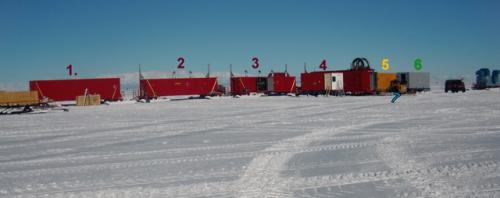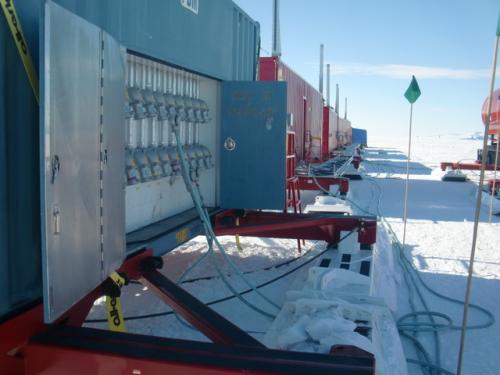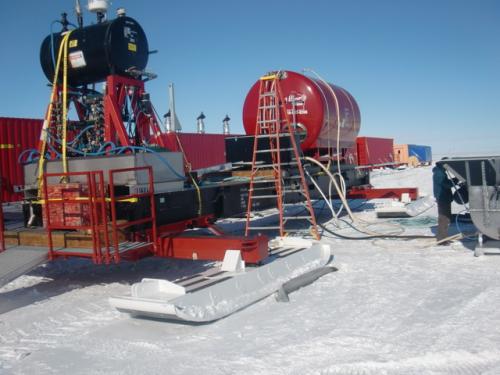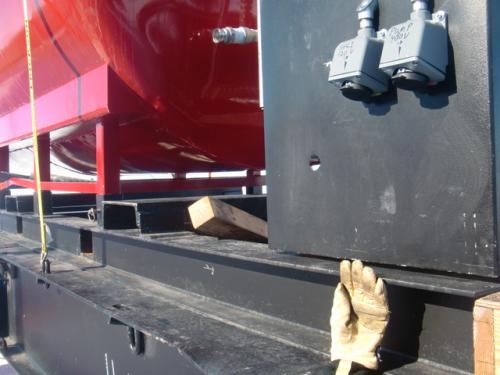After The Move
I wrote a journal a couple of days ago about the WISSARD equipment being moved onto thicker ice. The move is about done. There is a little bit more adjusting to do, but everything is close to its final location. To help you understand how much equipment there is and how it works, I’ve put in some pictures and explanations below.
The Equipment
Picture 1 shows all the units sitting on the Ross Ice Shelf. There is over fifty feet of ice under all these containers. The containers numbered 1-5 are each forty feet long. Number six is twenty feet long. There are two more that you can’t see, but I’ll include them too. Remember that WISSARD will be drilling a 30cm hole (about 1 foot ) in diameter and 800 m deep (almost ½ of a mile) into the ice.

Here’s what each of the containers does to help make the hot water drill work.
- This is a work shop and used to store spare parts. It has pipe, bolts, tools, and lots of other things that we might need when we are 500 miles away from any other source of materials.
- This unit contains the boilers that heat the water for drilling through the ice. There are a total of 6 boilers. When they are turned on, they heat the water to just below boiling temperature. Remember, we cut through the ice with hot water, so there needs to be a steady supply of water that is hot enough to melt the very hard ice in Antarctica.
- Another boiler unit like number 2
- This container holds the hose the carries the hot water into the drill hole. Altogether this container has around 1200 meters (3700 feet) of hose plus the motors to pull it back up out of the hole.
- Number 5 is the science workshop. It will be used to store the instruments that will take measurements in the hole after it is drilled. It’s actually a very comfortable place with heat and electric lights, many tools, and work benches.
- This is also used by the science team. It will have computers and other equipment in it that will be used to record the data that the test instruments send back up from the hole in the ice. It’s insulated, heated, and has lights in it as well. I even put some of the wiring in this container.

There are two other parts that you can’t see in this photo. One is the filter unit. It cleans the water that is used for drilling so that no bacteria can move from the surface of the ice down into the lake at the bottom of the glacier. It’s a really important piece of equipment.
The second item you can’t see is the snow melter. This takes snow and melts it down to start the whole process of getting water to do the drilling.

The drillers said they will probably fire up the boilers tomorrow, so I may have some pictures of that process to show you. We’ll just have to see if everything is ready for that step.
A Question to Answer
In this last picture there are two parts made of metal. One is red, the other black. I took my glove off to check something about these two items.
- What was I checking?
- What do you think the results of my little experiment were and why?
Write your answer into the Ask The Team and we'll see who gets it right.



Comments